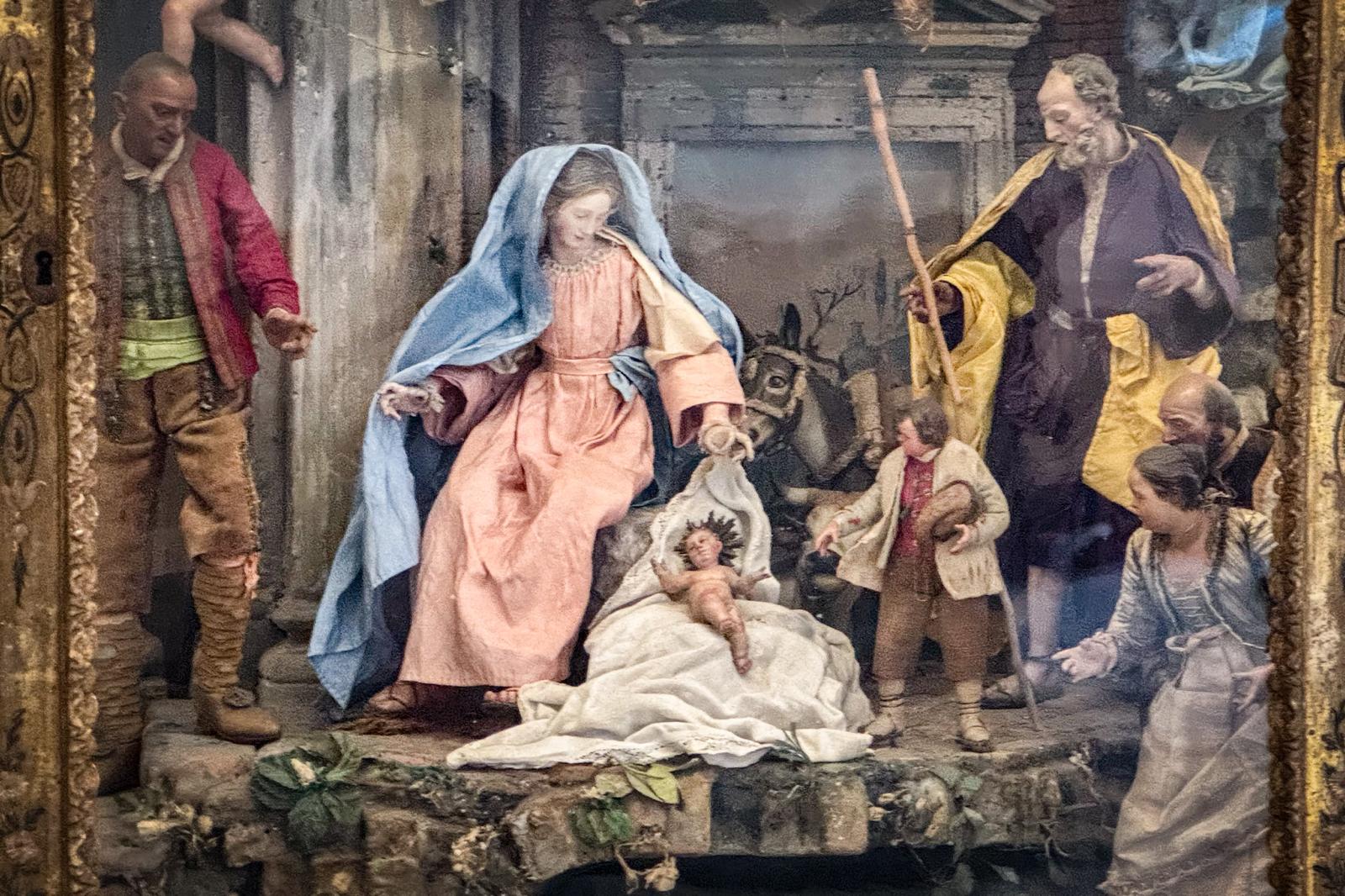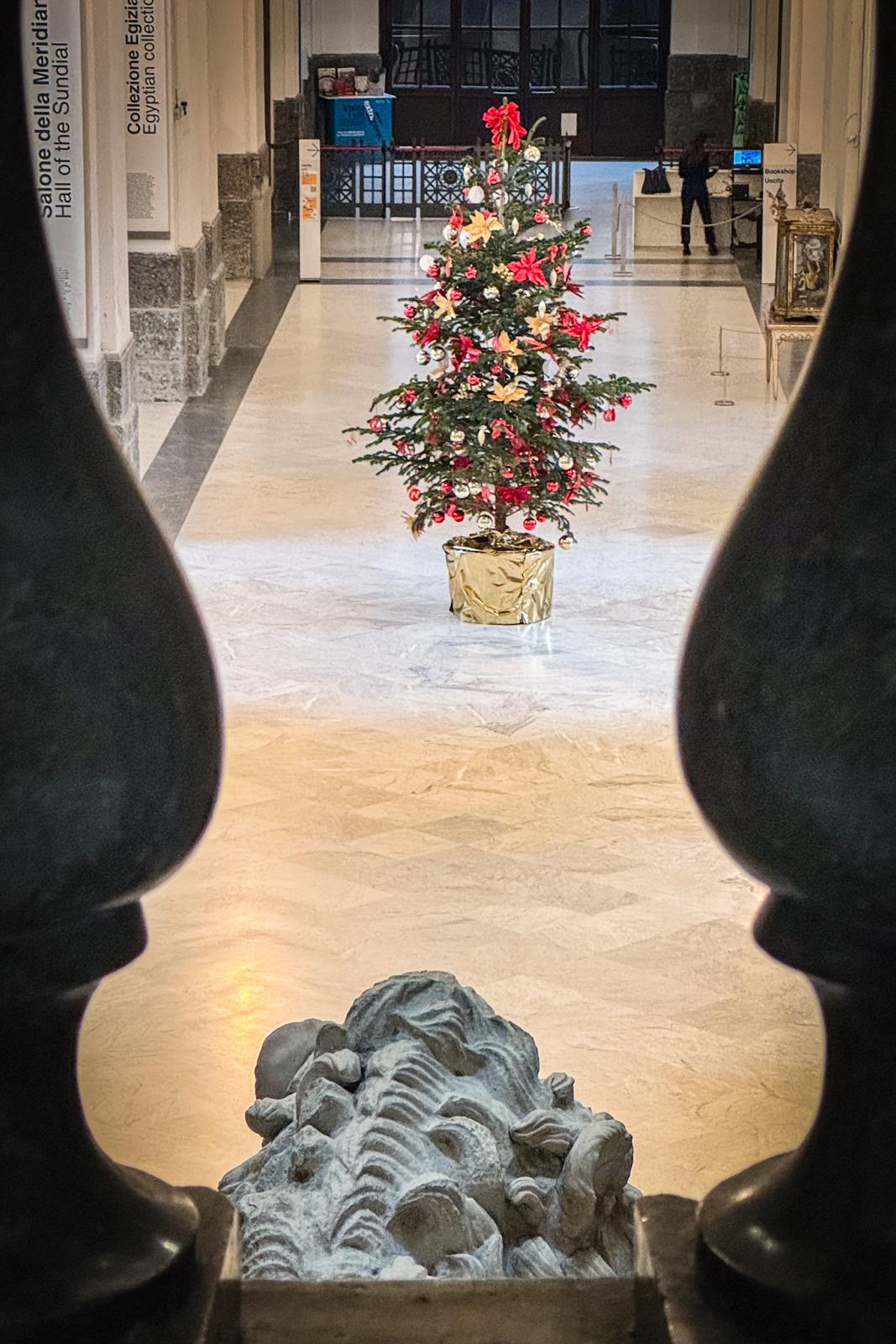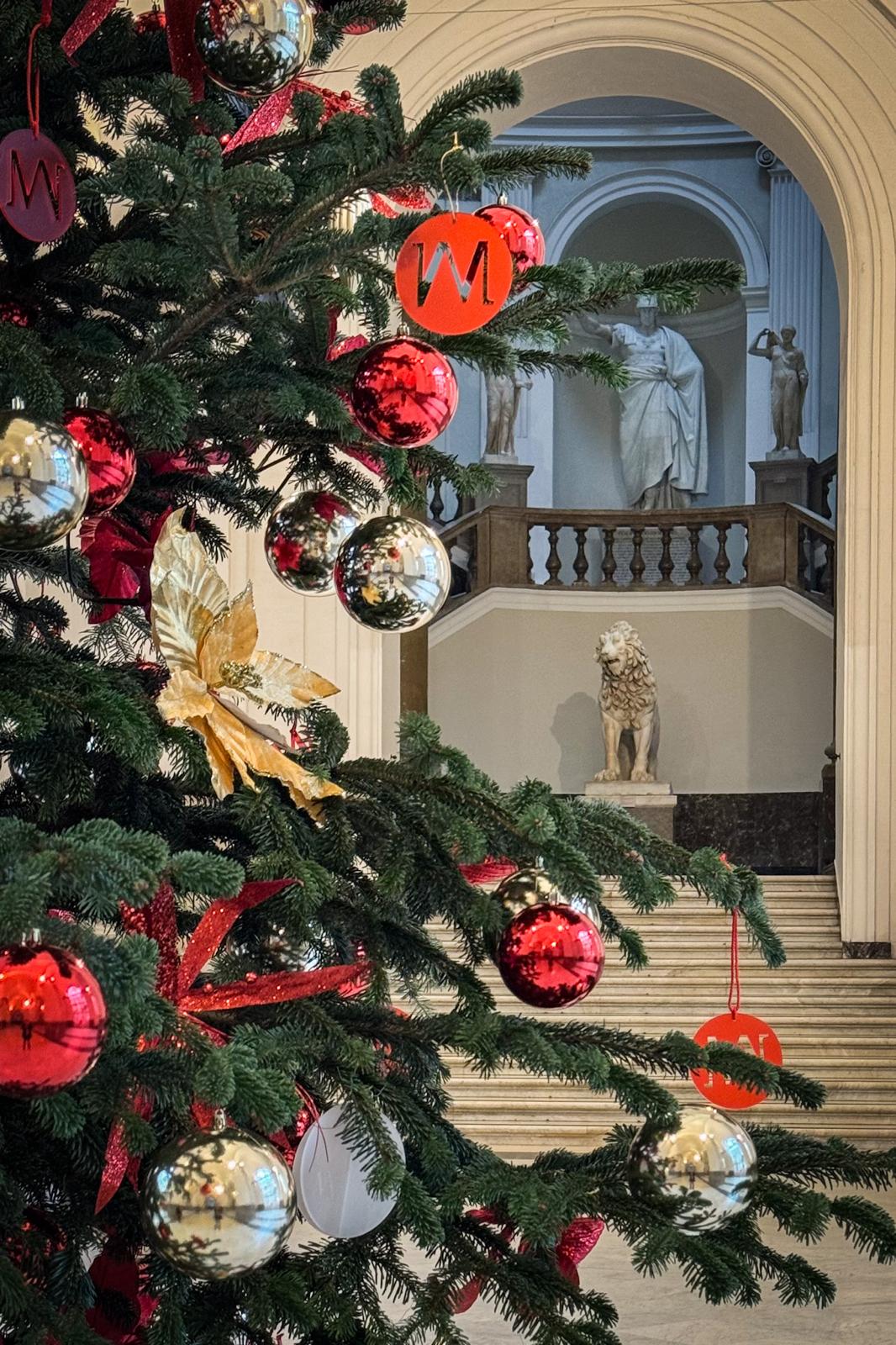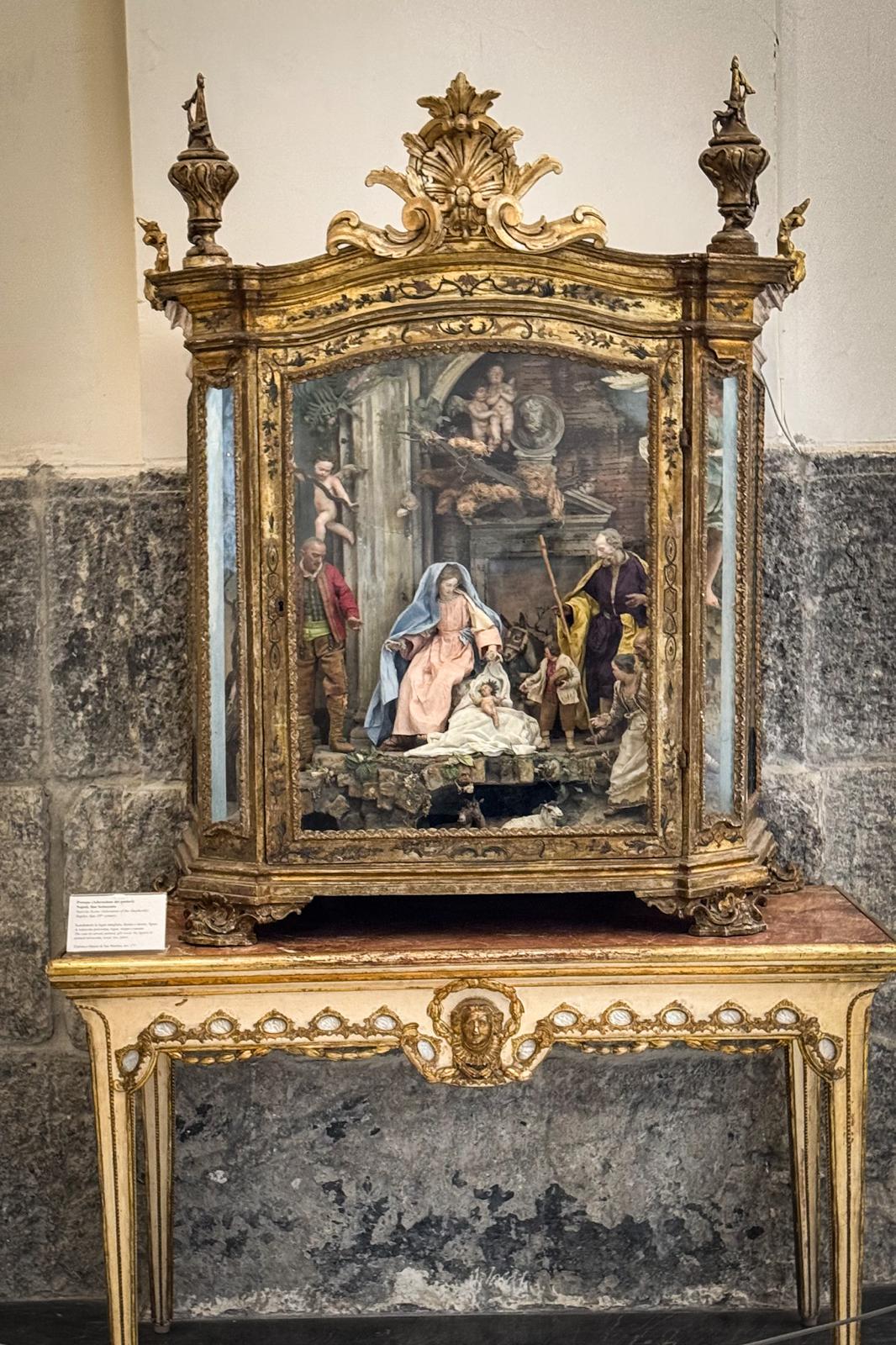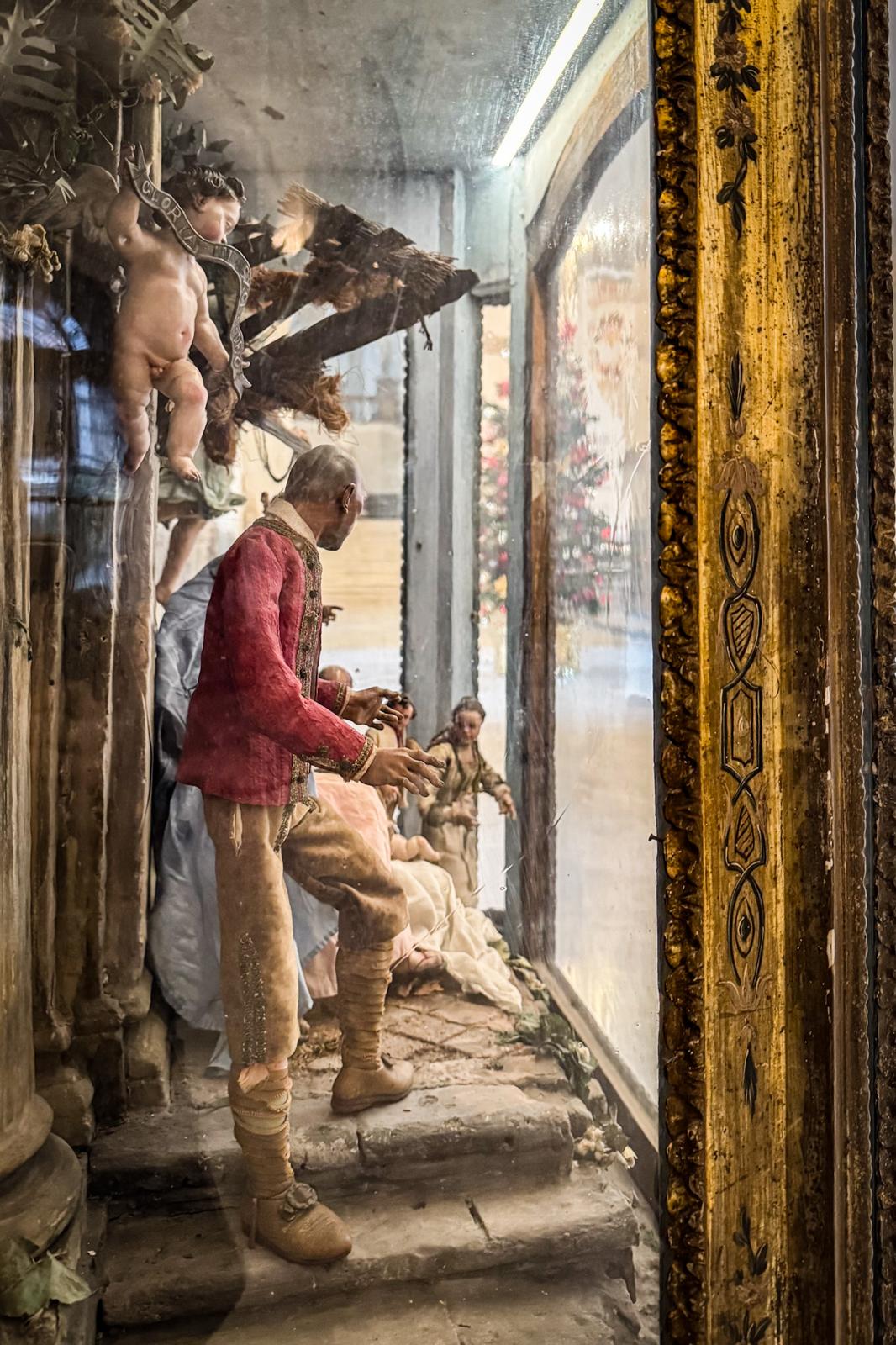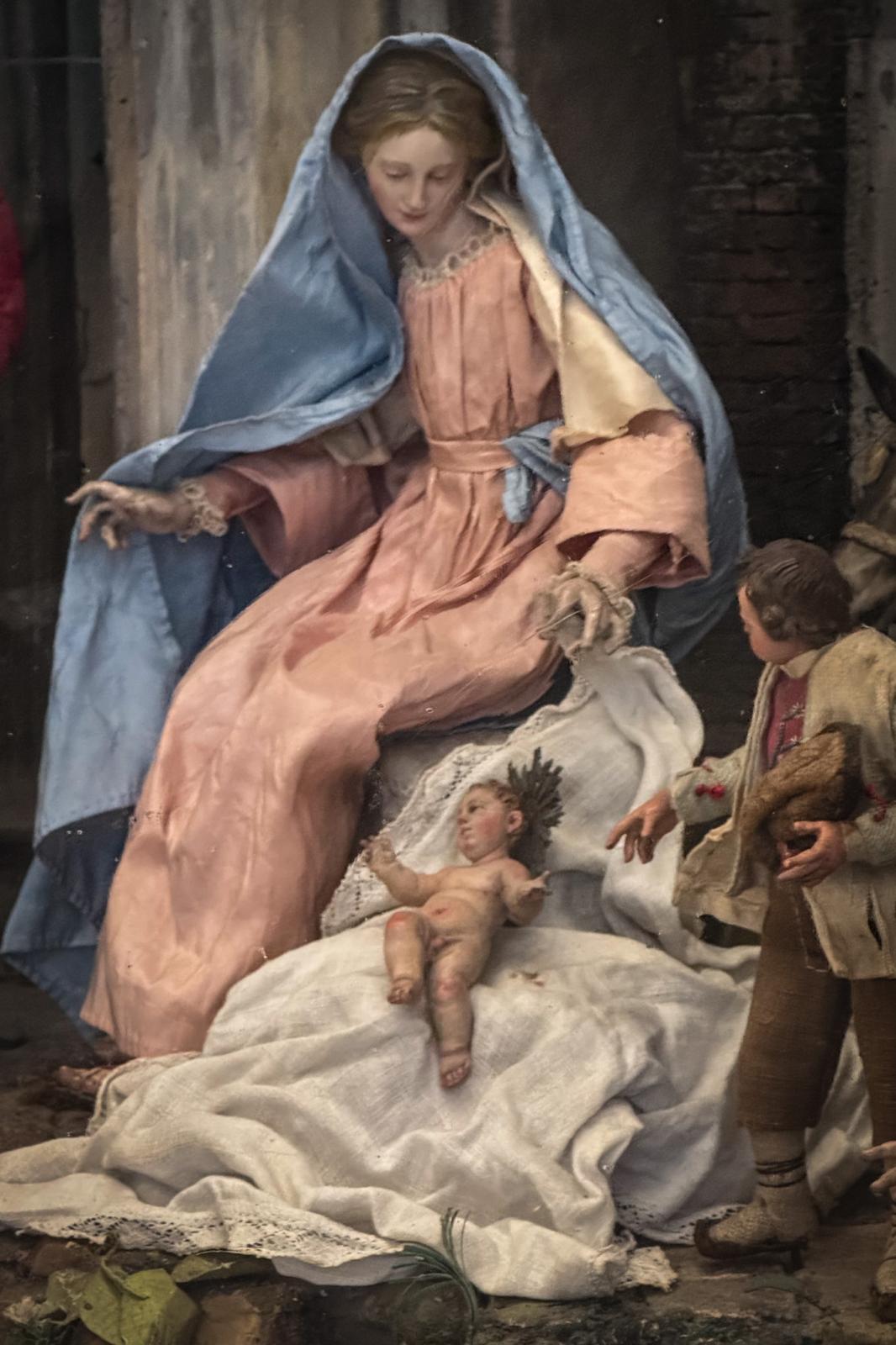dispaly cabinet: carved and gilded wood, glass
nativity: polychrome terracotta heads, glass eyes, iron wire, tow, fabric
Naples, Certosa and Museo di San Martino, inv. 175
An intrinsic characteristic of the Neapolitan crib of the eighteenth century is the representation of shepherds, country folks and peasants as a pretext to depict the people of the villages with clothing and accessories of the Kingdom taken from life, according to the fashion widespread at the time of Ferdinand IV of Bourbon. In this regard, the two figurines of the child shepherd boy and the peasant girl are particularly interesting, although the angel with the incense-burner, attributed to Giuseppe Sammartino, is apparently the most valuable piece of the set.
The Nativity scene is here set among the ruins of a classical architecture – emphasised by the bust of an ancient philosopher in a clipeus – in order to make more evident, in a symbolic way, that, for as much as Christianity is rooted in pagan culture, this has been overcome.
The ecstatic style of the composition and the refined and eloquent gestures of the characters, evoking the elegiac theatre, refer to the themes of eighteenth-century Neapolitan painting and in particular to Francesco De Mura.
The nativity scene was originally in the Chapel of San Giuseppe of the Church of the Certosa of San Martino.
